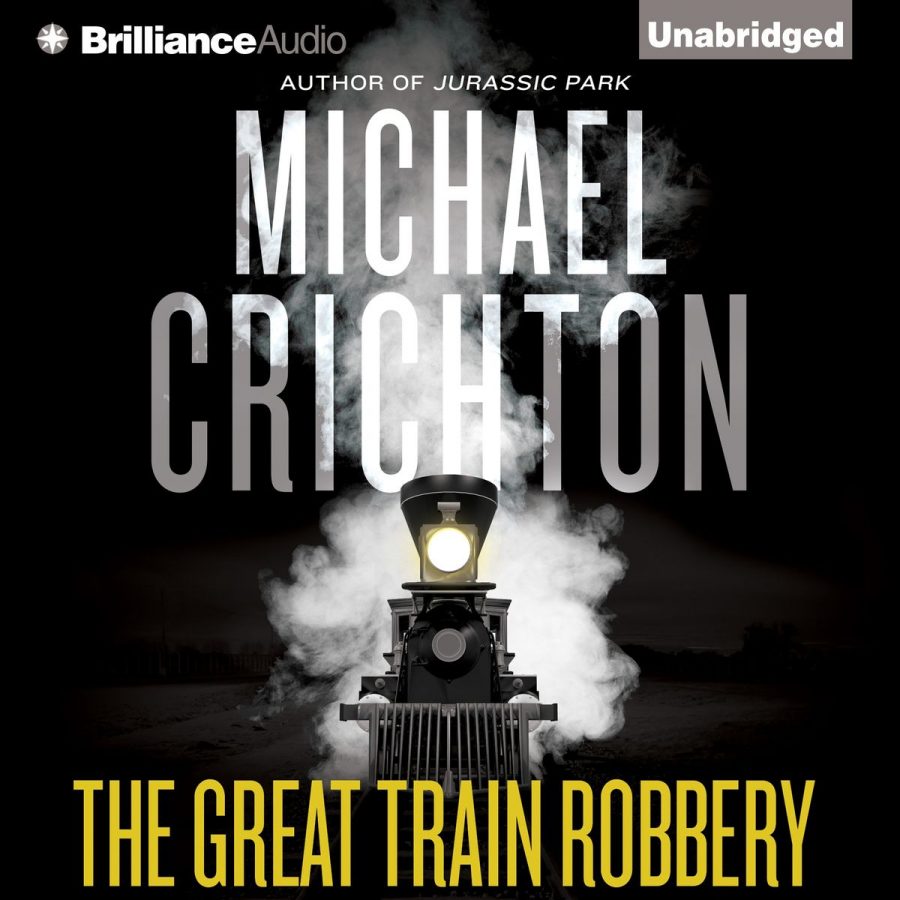The Great Train Robbery: follow and root for a master criminal
The Great Train Robbery by Michael Crichton, is loosely based on the true story of the Great Gold Robbery. The book follows master criminal William Pierce\; along with the help of Burgess, Agar, Miriam, and Barlow\; who skillfully arranged the robbery of 200 pounds of gold (worth $1,394,242.21) while it was being shipped along the South Eastern Railway.
William Pierce prepares for months before he attempts the Great Train Robbery. His first challenge is getting the copies of the keys, which will unlock the safes holding the gold. To do so, Pierce and his colleagues must first find the location of the keys. Once that’s done, they meticulously study people’s schedules and exploit people’s kindness or weaknesses in order to get to the keys. Once there, Agar must make a copy. The keys are definitely a challenge, but the actual train robbery is the hardest part. The criminals experience setbacks, change of plans, and challenges. The reader wonders how the plan will ever be executed. Mastermind Pierce exceeds the reader’s expectations though. His plan involves psychological tricks, stuntman skills, and genius design.
The style of the book is perfect for the story. It incorporates a historical, factual way of writing. This allows Pierce’s plans, and Pierce himself, to remain a mystery and, almost, an idol. It also allows the reader to understand the mid-1850s Victorian era England setting, and to see the inner workings of criminal life during that age, which is a unique part of the book.
Although Crichton keeps the reader engaged through the historical setting, genius tricks, strategic planning, and high tension parts\; that’s not the best part of the book. Crichton excels at making the reader root for Pierce and his partners. In “The Great Train Robbery” the normal good vs evil is flipped. Now the reader wants the typical evil people, criminals, to succeed\; while they want the attempts of the police force, especially investigator Harranby, to fail. Even though the reader knows Pierce is in the wrong, they can’t help but admire him and want him to succeed. Adding to this flipped worldview, the personalities which accompany each group are also switched. Pierce is calm, smart, and gentlemanly, while the “good” people are portrayed as foolish, frustrated, and angry.
The character of Pierce himself is fascinating. There is strong evidence within the book that Pierce is a psychopath. Perhaps this allows the reader to support him, because there is never any part where Pierce questions the morality of his actions. He does what has to be done without any misgivings. He has absolutely no problem exploiting others.
When asked, “Did you never feel, at any time, some sense of impropriety, some recognition of misconduct, some comprehension of unlawful behaving, some moral misgivings, in the performance of these various criminal acts?”
Pierce replied, “I do not comprehend the question.”
Later he was asked, “Why did you conceive, plan, and execute this dastardly and shocking crime?”
Pierce just shrugged and replied, “I wanted the money.”
I give The Great Train Robbery 5 out of 5 spartan heads, due to the well thought out heist, the high risk situations, the flipping of the normal good vs. evil, and because of Pierce, one of my favorite protagonists. While we all may want to believe we want the good to succeed in the world, I think, deep down, we all also need an admirable criminal to root for.
Your donation will support the student journalists of Fargo North High School. Your contribution will allow us to resume physical printing of our newspaper for students at Fargo North!

Laura Simmons is a writer for Fargo North High's Scroll. She takes Orchestra and Latin as well as Journalism for her electives. She is also active in multiple...








